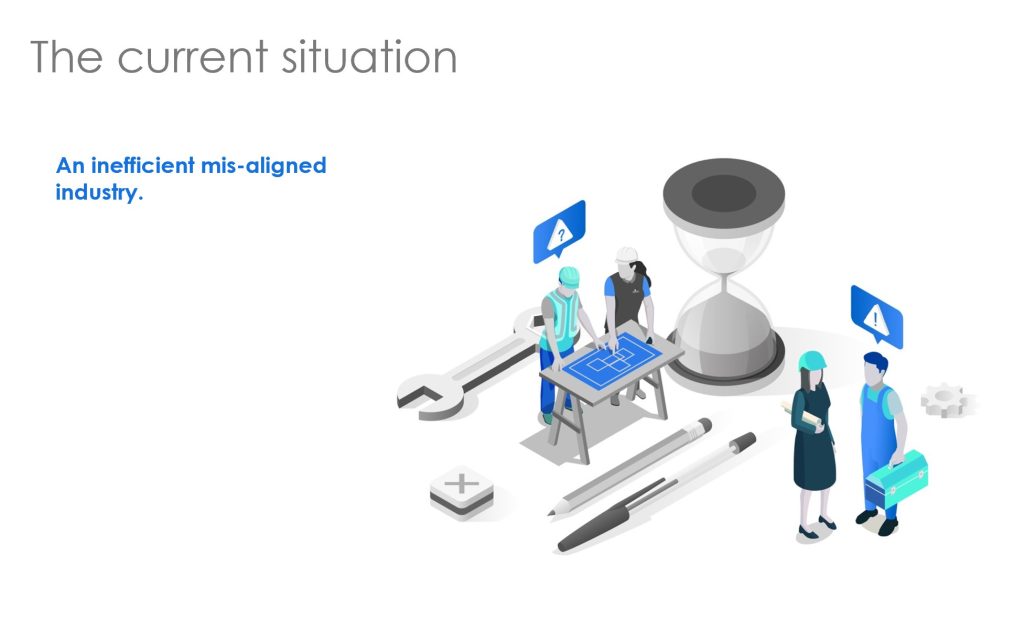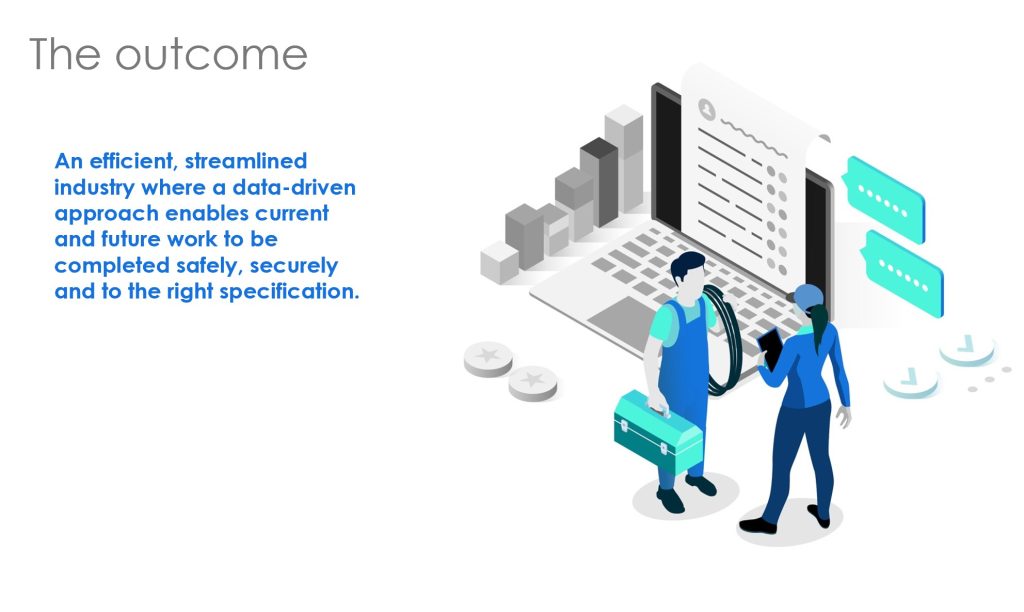nima – formerly the UK BIM Alliance – is leading efforts to embed more data-driven ways of working to deliver tomorrow’s built environment, says Paul Wilkinson
October 2023 will mark the first anniversary of the rebranding of the UK BIM Alliance to ‘nima’.
The volunteer-led organisation, originally founded in 2016, was relaunched at UK Construction Week in Birmingham on 4 October 2022. The name, also the Greek word for “thread”, is not an abbreviation.
It was selected to help give the body an identity, a sense of purpose and a set of behaviours that better align with current and anticipated future UK thinking on what we used to call “digital construction”.
Government and industry discussion is no longer just about BIM
After more than a decade of BIM progress, government and industry discussion is no longer just about BIM – often seen as a purely technological change – but about wider information management challenges.
These include building safety, climate change and using data to deliver better, more valuable outcomes across the lifecycles of built and managed assets.
The alliance began debating its identity and purpose after the publication of the international ISO 19650 standards in January 2019, mindful that industry discussions were also embracing emerging concepts such as digital twins.
While BIM is becoming business as usual for significant parts of the built environment, it is often misconstrued as a 3D design technology, rather than a process. And effective information exchanges with professionals in facilities or asset management are still the exception rather than the norm.
Supporting the use of information across the built environment
The new name reflects an ongoing evolution. nima supports purposeful use of information across the whole built environment, from the inception and planning stages of projects, through design and construction, and then – most importantly – into support for efficient operation, maintenance and use of assets through to their end-of-life.
As part of the rebranding process, the nima name is supported by a new logo, an updated website (www.wearenima.im) and social media channels.
The UK BIM Framework, case studies, plain language guides, local and sectoral group resources, and relationships with industry organisations are being maintained and expanded.
New initiatives have included a nima podcast, and nima’s first virtual conference, subtitled Data: Meeting today’s urgent needs, will be taking place online on 2 November.
This novel one-day conference is perhaps the clearest example of nima’s new ambitions. Free for anyone to attend and with no limits on attendance, it will feature keynotes and panel discussions on four themes: building safety and the Golden Thread; residential and social housing; diversity of thinking; and technology, innovation and artificial intelligence (AI – think ChatGPT, for example).
The need for open and inclusive conversations about effective information management is particularly clear in relation to building safety.
Information management and building safety
Since the June 2017 Grenfell tragedy, improving the safety of our buildings has been the subject of detailed debate.
An independent review of Building Regulations and fire safety was led by Dame Judith Hackitt – who will deliver the building safety keynote at nima’s conference. Her 2018 report, Building a Safer Future, has stimulated a major overhaul of UK building safety information management.
Dame Judith recommended a digital-by-default Golden Thread approach to the management of building information. This was timely encouragement to the UK construction industry to hasten its digital transformation.
Recent years have therefore seen experts from across industry, including many individuals active in nima, looking at ways to produce a standardised digital Golden Thread for building safety information that will satisfy the requirements of the Building Safety Act. And this is just one example where new digital processes will transform traditional ways of working.
Think data, not documents
The architecture, engineering and construction and operation (AECO) sector has historically relied on paper-based documents and drawings but the government is increasingly demanding more digital approaches.
For example, a July 2023 DLUHC consultation paper on local plan-making related to the Levelling-up & Regeneration Bill said: “In line with our ambitions, plans will wherever possible make the best use of modern technology and be produced digitally, rather than as ‘analogue’ (PDF or paper) documents by default.”
Adopting more data-centric approaches to information management will help the AECO sector become more efficient and productive. However, achieving the UK vision of a national digital twin will be impossible without widespread adoption of common data standards.
Supporting an increasingly connected built environment


The UK needs to be bolder about defining a common data structure for the built environment which all clients adopt. This structure can then be used to drive processes in the planning and operational and maintenance phases – not just during design and construction. And making this happen will require inputs from the planning, asset and facilities management communities, with support from their technology providers.
Now thinking BIM and beyond, nima is committed to supporting open standards-based approaches to information management, helping users create, exchange and use all types of data more effectively across our increasingly interconnected built environment.
Paul Wilkinson
Vice-chair and head of technology group
nima














